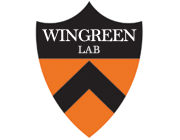Spatial ecology of territorial populations
Publication Year
2019
Type
Journal Article
Abstract
Many ecosystems, from vegetation to biofilms, are composed of territorial populations that compete for both nutrients and physical space. What are the implications of such spatial organization for biodiversity? To address this question, we developed and analyzed a model of territorial resource competition. In the model, all species obey trade-offs inspired by biophysical constraints on metabolism; the species occupy nonoverlapping territories, while nutrients diffuse in space. We find that the nutrient diffusion time is an important control parameter for both biodiversity and the timescale of population dynamics. Interestingly, fast nutrient diffusion allows the populations of some species to fluctuate to zero, leading to extinctions. Moreover, territorial competition spontaneously gives rise to both multistability and the Allee effect (in which a minimum population is required for survival), so that small perturbations can have major ecological effects. While the assumption of trade-offs allows for the coexistence of more species than the number of nutrients-thus violating the principle of competitive exclusion-overall biodiversity is curbed by the domination of "oligotroph" species. Importantly, in contrast to well-mixed models, spatial structure renders diversity robust to inequalities in metabolic trade-offs. Our results suggest that territorial ecosystems can display high biodiversity and rich dynamics simply due to competition for resources in a spatial community.
Keywords
Journal
Proc Natl Acad Sci U S A
Volume
116
Pages
17874-17879
Date Published
09/2019
ISBN
0027-8424 (Print)0027-8424
Accession Number
31434790
1091-6490Weiner, Benjamin GPosfai, AnnaWingreen, Ned SR01 GM082938/GM/NIGMS NIH HHS/United StatesJournal ArticleResearch Support, N.I.H., ExtramuralResearch Support, Non-U.S. Gov'tResearch Support, U.S. Gov't, Non-P.H.S.2019/08/23Proc Natl Acad Sci U S A. 2019 Sep 3;116(36):17874-17879. doi: 10.1073/pnas.1911570116. Epub 2019 Aug 21.

